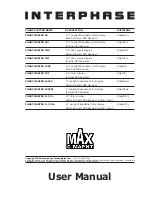
LEA-5, NEO-5, TIM-5H - Hardware Integration Manual
GPS.G5-MS5-09027-A2
Released
Preface
Page 3 of 68
Preface
u-blox Technical Documentation
As part of our commitment to customer support, u-blox maintains an extensive volume of technical
documentation for our products. In addition to our product-specific technical data sheets, the following manuals
are available to assist u-blox customers in product design and development.
GPS Compendium:
This document, also known as the GPS book, provides a wealth of information
regarding generic questions about GPS system functionalities and technology.
Receiver Description including Protocol Specification:
Messages, configuration and functionalities of
the u-blox 5 software releases and receivers are explained in this document.
Hardware Integration Manual:
This Manual provides hardware design instructions and information on
how to set up production and final product tests.
Application Note:
document provides general design instructions and information that applies to all u-blox
GPS receivers. See Section
Related documents for a list of Application Notes related to your GPS receiver.
How to use this Manual
The LEA-5, NEO-5, TIM-5H Hardware Integration Manual provides the necessary information to successfully
design in and configure these u-blox 5-based GPS/GALILEO receiver modules. For navigating this document
please note the following:
This manual has a modular structure. It is not necessary to read it from the beginning to the end. To help in
finding needed information, a brief section overview is provided below:
1.
: This chapter introduces the basics of function and architecture of the u-blox 5
modules.
2.
: This chapter provides the Design-In information necessary for a successful design.
3.
: This chapter defines packaging, handling, shipment, storage and soldering.
4.
: This chapter provides information about testing of OEM receivers in production.
5.
: The Appendix includes guidelines on how to successfully migrate to u-blox 5 designs, and useful
information about the different antenna types available on the market and how to reduce interference in
your GPS design.
This manual has a modular structure. It is not necessary to read it from the beginning to the end.
The following symbols are used to highlight important information within the manual:
An index finger points out key information pertaining to module integration and performance.
A warning symbol indicates actions that could negatively impact or damage the module.



































